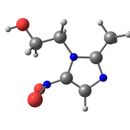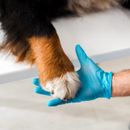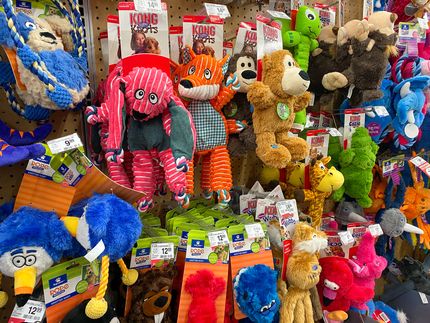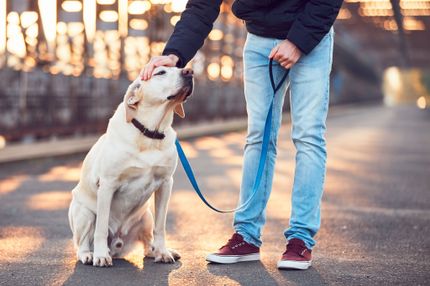The favorite treat remains untouched and playing ball is no fun today either? Stomach or abdominal pain in dogs can manifest itself in different ways. With this article we would like to help you to correctly interpret the first signs of stomach ache, to shed light on possible causes for the pain and to show you how you can best help your four-legged friend.
How do I recognize stomach ache in a dog?
As mentioned above, refusal to eat and listlessness are good signs of pain. You know your four-legged friend best. If he or she is normally a ball junkie and suddenly doesn't dignify the toy with a glance, you don't even have to ask yourself if something is wrong, then the case is obvious. However, not every dog shows pain so clearly, so sometimes you have to look a little closer:
- frequent licking of the nose or even just sticking out the tongue
- hardened abdominal wall and cramped posture
- sensitivity to touch
- vomiting or diarrhea
These are all signs, or concomitants, of abdominal pain, except for the noticeably frequent licking of the nose, which generally means pain.
Abdominal pain could be a sign of several health problems in dogs, and close observation of the dog's condition and consultation with a veterinarian are important when unusual symptoms are noticed. Here are some common questions that are often asked when it is suspected that a dog is experiencing abdominal pain:
- How can abdominal pain be identified in a dog?
- What symptoms are exhibited by dogs when they have abdominal pain?
- What could be the causes of abdominal pain in dogs?
- How can a dog be helped when it has abdominal pain?
- Are abdominal pains in dogs dangerous?
- When should a veterinarian be consulted if a dog has belly pain?
- What treatments are available for dogs with abdominal pain?
- What can be given to a dog to eat when it has a stomachache?
- Can a dog be given medication for abdominal pain?
- How can abdominal pain be prevented in a dog?
It should be noted that these questions should only be used as a starting point. If a dog has health problems, a veterinarian should always be consulted to ensure that the dog receives the best possible treatment. We answer all your questions below
How can abdominal pain in a dog be detected?
Abdominal pain in a dog can be detected by various signs and symptoms. Visible discomfort or pain may be observed when the abdominal area is touched. The dog may also show signs of restlessness and have difficulty finding a comfortable position. It is also possible that unusual swelling or hardness may be noted in the abdominal area. Furthermore, behavioral changes such as increased panting, loss of appetite, or altered elimination behavior (i.e., urination and defecation) may have occurred. In addition, in some cases, changes in the dog's gait may also be noted, as abdominal pain often causes a tense or squatting posture.
What symptoms are shown by dogs when they have abdominal pain?
Several symptoms may be exhibited by dogs when they have abdominal pain. These include physical symptoms such as increased abdominal tenderness, swelling, hardness or bloating in the abdominal area. Dogs may also show behavioral symptoms such as increased panting, increased licking of the abdominal area, loss of appetite, vomiting or diarrhea. There may also be changes in sleep and activity patterns, including increased rest or, conversely, increased restlessness. It is important to emphasize that these symptoms can also occur with other health problems, and therefore an accurate diagnosis by a veterinarian is necessary.
What could be the causes of abdominal pain in dogs?
The causes of abdominal pain in dogs are varied and can range from simple to severe health problems. One common cause is digestive problems, such as gastrointestinal infections, constipation, gastritis or intestinal obstruction. Other possible causes can include parasites such as worms, or infections such as peritonitis. More serious conditions such as tumors in the abdomen, bladder stones, kidney problems or gastric torsion can also cause abdominal pain. The latter is a medical emergency that requires immediate veterinary attention.
What can be done to help a dog with abdominal pain?
The first and most important action to help a dog with abdominal pain is to contact a veterinarian. Based on the symptoms and possibly other tests (such as x-rays or ultrasound), the veterinarian will make a diagnosis and recommend appropriate treatment. It is important to understand that without an accurate diagnosis, appropriate treatment cannot be initiated. Self-treatment based on symptoms may do more harm than good. For mild digestive problems, a change in diet might be suggested. In more severe cases, medication or even surgery might be necessary.
Are abdominal pain in dogs dangerous?
Abdominal pain in dogs can be potentially dangerous, depending on the underlying cause. Mild cases of abdominal pain caused by minor digestive problems or gas are usually not life-threatening. However, more severe conditions such as gastric torsion, peritonitis or intestinal obstruction can be life-threatening and require immediate veterinary care. Therefore, any suspected diagnosis of abdominal pain in a dog should be taken seriously and promptly evaluated by a veterinarian.
When should a veterinarian be consulted if a dog has abdominal pain?
A veterinarian should be consulted as soon as possible if a dog is suspected of having abdominal pain, especially if the pain is severe or if other symptoms such as vomiting, diarrhea, loss of appetite or behavioral changes occur. If the dog exhibits severe pain, such as constant whining, extreme agitation, a grossly distended abdomen, or severe shock, an emergency veterinary clinic should be visited immediately. It's always better to be safe than sorry when it comes to your dog's health.
What treatments are available for dogs with abdominal pain?
The treatments available for dogs with abdominal pain depend on the underlying cause. For digestive problems, changes in diet or certain medications to aid digestion could be recommended. For infections, antibiotics could be prescribed. For parasite infestations, antiparasitics might be needed. For more serious conditions, such as gastric torsion or intestinal obstruction, surgery might be needed. In all cases, it is important that treatment is prescribed and monitored by a veterinarian.
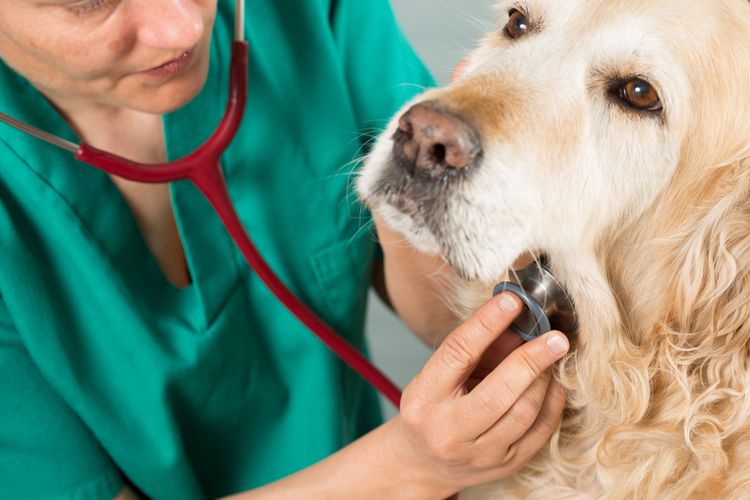
What can be given to a dog to eat when it has a stomach ache?
What to give a dog to eat when he has stomach pain depends on the cause of the pain. In general, a light, easy-to-digest diet might be recommended, which can include cooked chicken and rice. However, in some cases, the veterinarian might recommend stopping feeding for a short period of time to soothe the gastrointestinal tract. It is important to note that any change in the dog's diet should be made under the guidance of a veterinarian.
Can a dog be given medication for abdominal pain?
Yes, a dog can be given medication for abdominal pain, but only under the direction of a veterinarian. Some medications can help promote digestion, reduce inflammation, or fight infection. It is important to note, however, that many human medications for pain can be toxic to dogs and should never be given without a veterinary prescription.
How can abdominal pain be prevented in a dog?
There are several measures that can help prevent abdominal pain in a dog. These include a healthy, balanced diet and regular exercise. It is also important to ensure that the dog is regularly checked and treated for parasites, and that it receives all necessary vaccinations. Finally, access to harmful substances that can cause abdominal pain, such as certain plants, chemicals or inappropriate foods, should be prevented.
Explanation: We are not doctors! Please always see a doctor if you are not sure!!!



